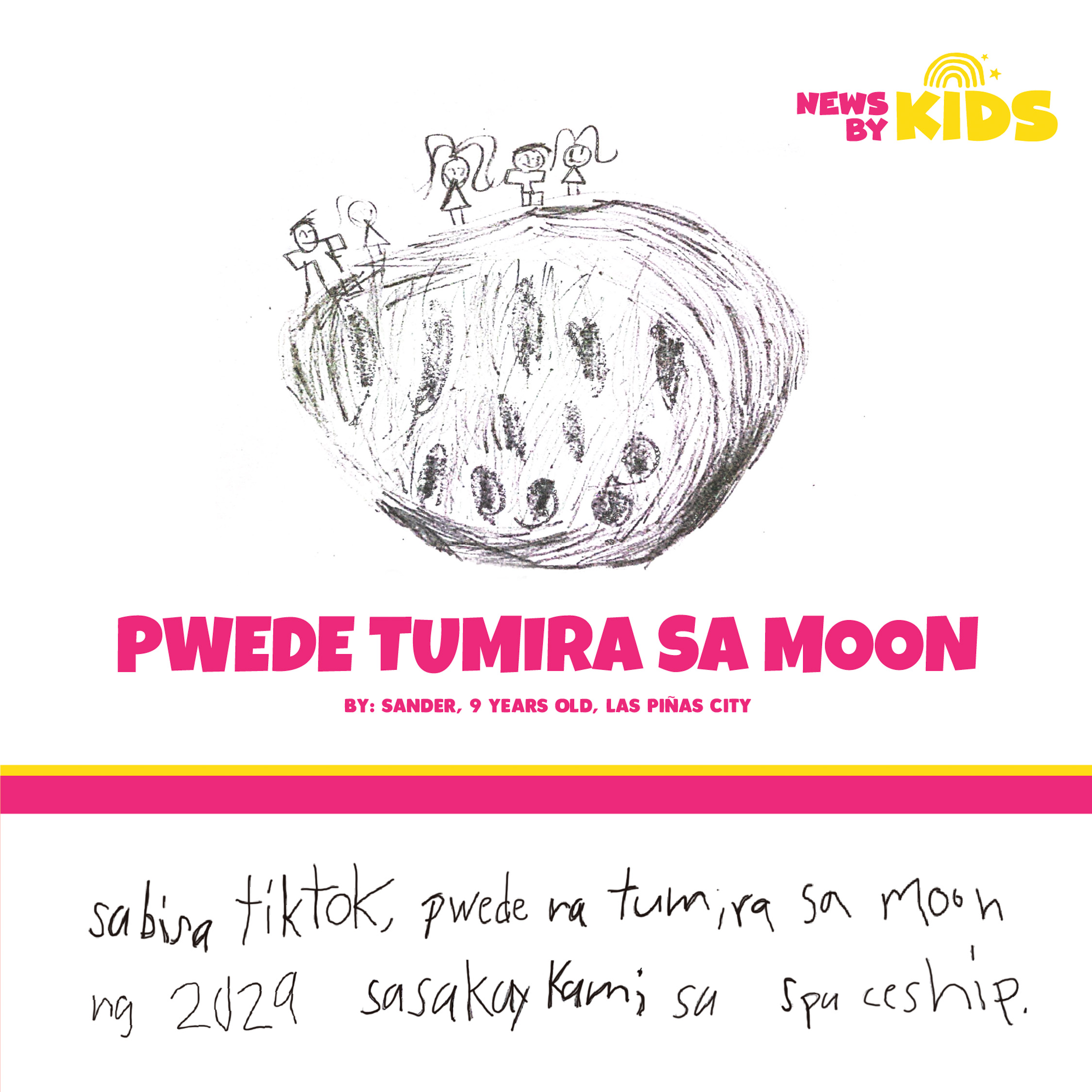Saving them early from disinformation

‘LESSON’ FROM SOCIAL MEDIA A drawing by a child who learned from TikTok that humanity will relocate to the moon is shown on the Facebook page of “News By Kids” to underscore the spread of disinformation among children. REDBIN PHILIPPINES
MANILA, Philippines — Not too long ago and for certain age groups, the internet was still a novelty. But it became essential for Generation Alpha, the kids born after 2010, with information flowing freely at their fingertips through TikTok, Roblox and YouTube.
This quick and easy access to information is a far cry from the slow dial-up connections and bulky cable modems of the past. But now this advantage also means that users are exposed to disinformation at an unprecedented rate, said RJ Espartinez, associate creative director for ad agency RedBin Philippines.
In March, RedBin and local media group PressOne.ph launched a joint campaign called “News By Kids” to fight disinformation targeting the youth.
READ: Mis/disinformation tagged as No.1 threat to global stability
“News By Kids,” which has a Facebook page, aims to fill a gap in the fight against disinformation, which is mostly targeted toward adult consumers of news.
The people behind this joint project say they hope to understand what kind of social-media content children are consuming so they could fact-check if these were necessary.
Rommel Lopez, associate editor of PressOne.ph, said his group hopes to “highlight the danger that kids, too, are gullible to online disinformation, … (so we are) determined to [emphasize] the importance of fact-checking and credible information sources so we can provide a more factual and safe online space for our kids.”
Espartinez noted that “We don’t pay enough attention to the kind of information and content that kids consume. It’s easy to just dismiss it as something they can grow out of but sometimes if not corrected early, it becomes a problematic habit.”
Critical evaluation skills
A 2021 report by the United Nations Children’s Fund expressed the same concerns, saying the “popularity of the internet, social media and visual networks, such as Instagram and TikTok, among children has exacerbated the risks.”
The report also cited the dismally low rate of critical evaluation skills in the Philippines when it comes to disinformation: only 15 percent of children 9 to 11 years old; 23 percent in the age group of 12 to 14 years old; and 30 percent in the age group of 15 to 17 years old.
Espartinez emphasized the need to meet the kids halfway. This is why, he said, the “News by Kids” campaign starts with a simple activity as it reaches out to schools this year—during the campaign’s first phase, 20 grade schoolers were asked to draw stories they found online.
While the drawings themselves seemed innocent—a moon, a mermaid, planet Earth—their explanations painted a different picture.
One child learned from a TikTok video that people would be living on the moon by 2029. Another “saw” also on social media a mermaid stranded like a sea animal on the shores of Batangas province. Yet another child was convinced after watching TikTok that scientists had found a new Earth.
‘Legitimate media’
These are “cute stories,” Espartinez said. “But they also belied the fact that they were still misinformation …. It’s hard to disregard it especially as [the children are] still at a developing stage.”
After RedBin and PressOne explained the facts to the children, their drawings were published digitally and in a community paper with corresponding fact-check annotations.Some of the parents, Espartinez said, were shocked to see their kids’ drawings, while others expressed equal distrust toward legitimate media.
“One time, we had a parent say that they don’t trust outlets like the Inquirer, Rappler, since they’re also ‘fake news,’” Espartinez said. “So it’s really important to try and instill in the kids [an] appreciation [of the] legitimate media as early as possible.”
He also emphasized the need for advertising and PR companies, which are part of the creatives industry, to help in the fight against disinformation.
“This should be our role. We’re not just here to sell or help the brands we’re working with,” Espartinez said. “Being in the business of communication, …we use stories to convince people, so we want to use it also to convince them to know the truth.”